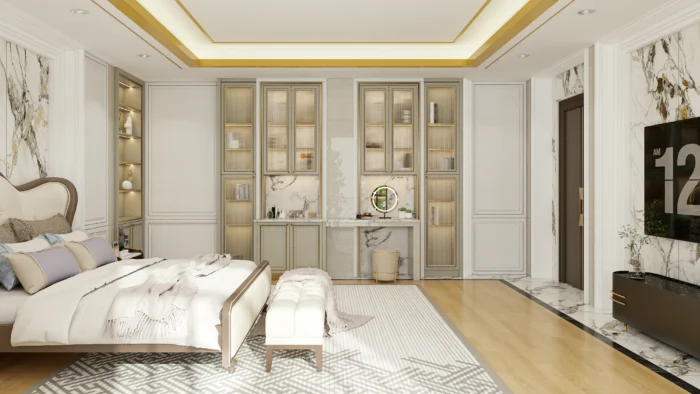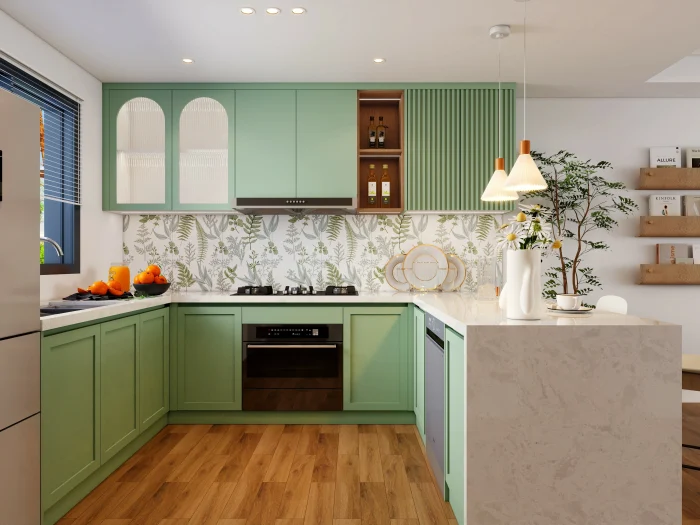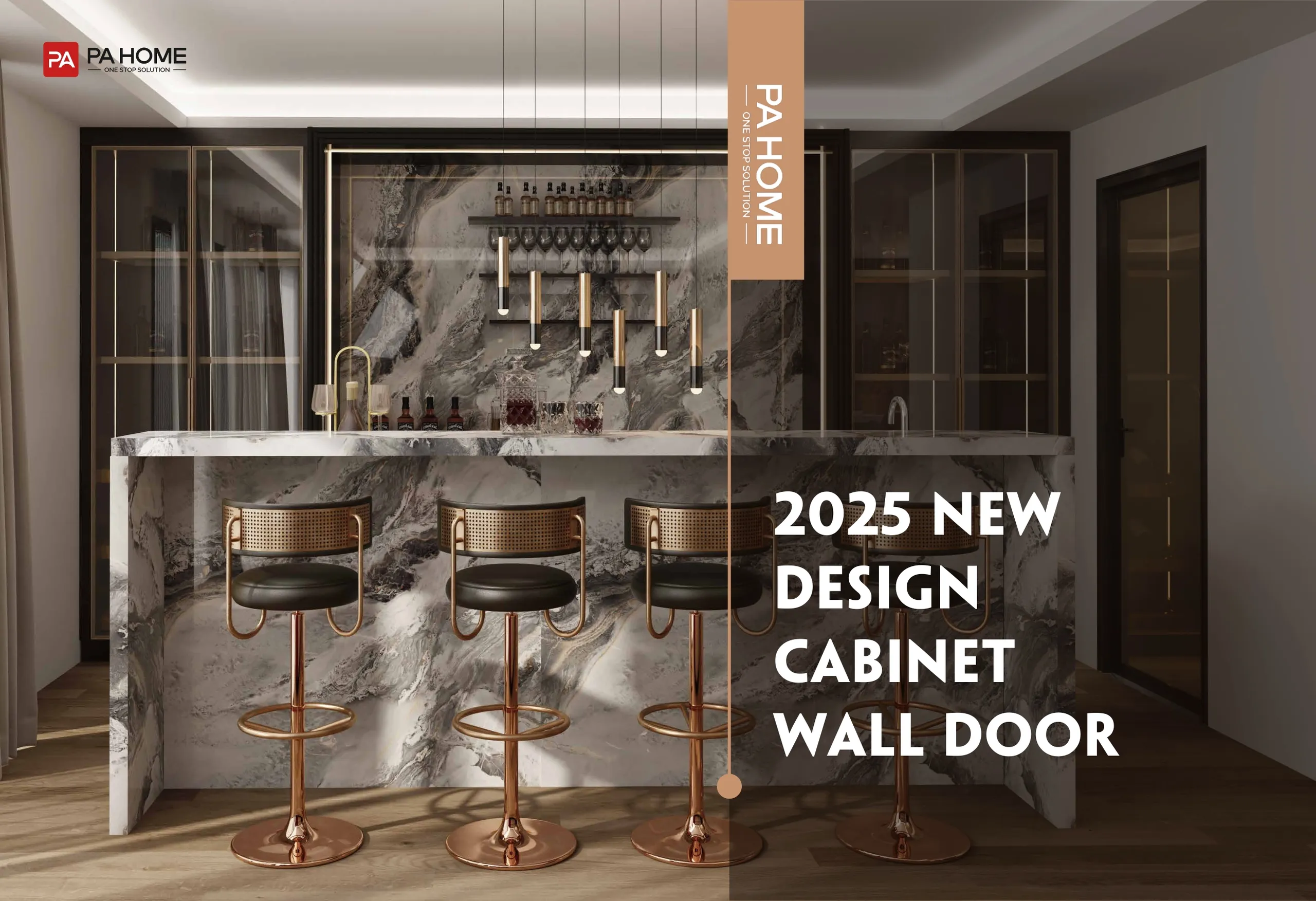Wine lovers know that proper wine storage is essential for preserving the taste and quality of their collection. Whether you’re just starting to build your wine stash or you’re an experienced connoisseur, choosing the right wine cabinets is crucial for the long-term care of your bottles. But how do you select the right one with so many options available? In this guide, we’ll break down the key factors to consider when choosing a wine cabinet, from storage capacity to temperature control and smart features. Let’s explore these details so you can make a more informed decision.
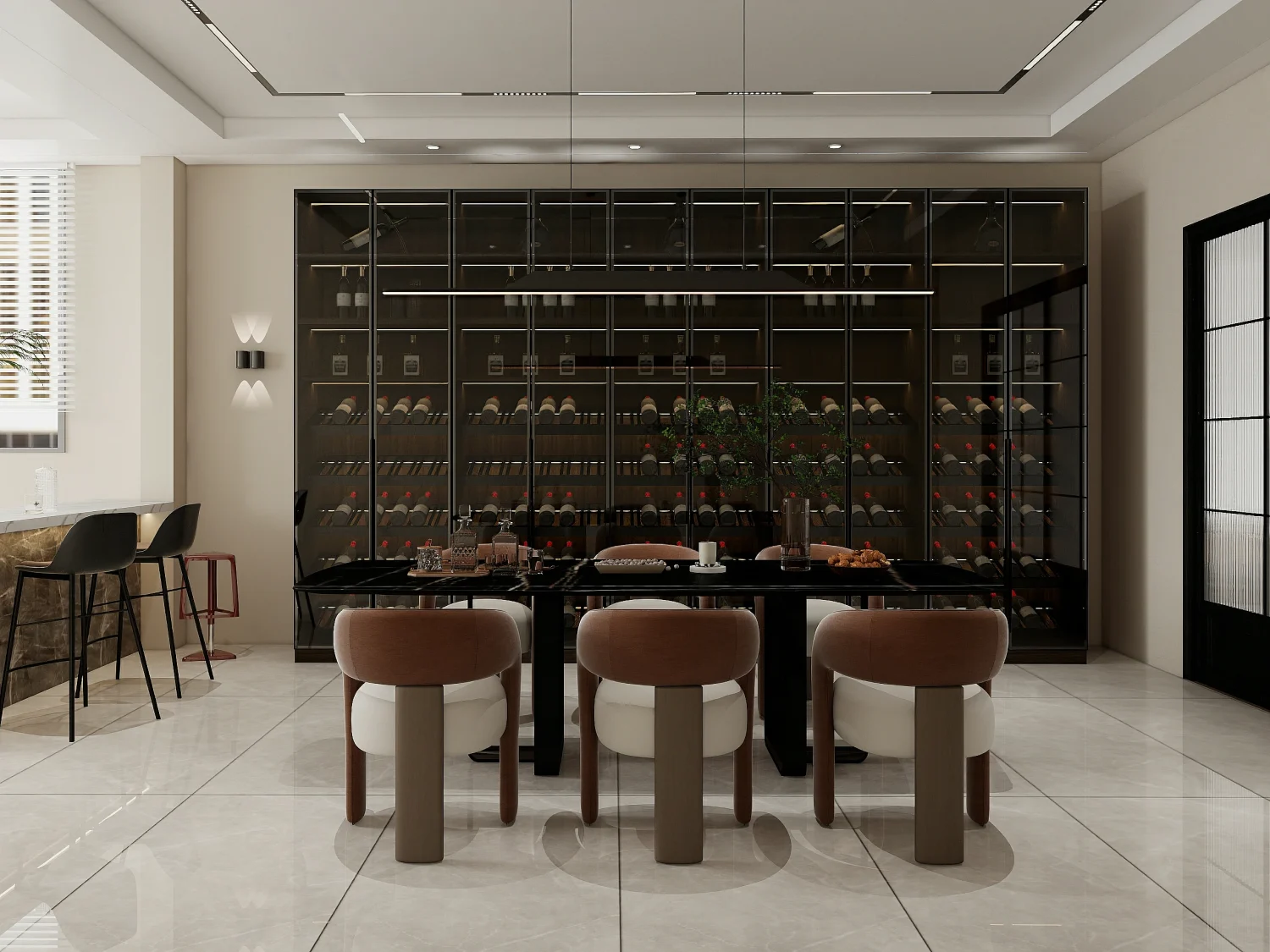
What Exactly is a Wine Cabinet, and Why Do You Need One?
If you’re wondering whether you really need a wine cabinet, the answer is a resounding yes—especially if you want to properly preserve your wine collection. Unlike regular refrigerators, wine cabinets are specifically designed to provide the ideal environment for wine storage. They maintain consistent temperature, humidity, and protection from UV light, all of which are essential to keeping wine at its best.
Wine Cabinet vs. Regular Refrigerator: Why Not Use a Fridge?
A typical fridge runs at a much colder temperature, which is unsuitable for wine storage. While refrigerators are great for everyday perishables, they tend to dry out corks, which can lead to oxidation and spoilage. Wine cabinets, on the other hand, have been designed with the unique needs of wine in mind, offering the right temperature range (typically 45°F to 65°F) and humidity control. This ensures that the wine remains sealed and ages at a steady, optimal rate, without being disturbed by fluctuations in temperature or vibration.
A wine cabinet is purpose-built to provide consistent temperature, humidity, vibration control, and UV protection, ensuring wine ages properly.
Any refrigerator works the same as a wine cabinet—if it can cool, it’s sufficient.
What Are the Different Types of Wine Cabinets Available?
Wine cabinets come in several types, each suited to different needs and preferences. Let’s break down the most common options available so you can choose the right one for your collection.
Built‑in vs Freestanding Wine Cabinets
Built-in Wine Cabinets: These are perfect for those who want a seamless, integrated look in their kitchen or living area. Built-in models fit neatly into cabinetry, blending in with your home’s design. They save floor space but require precise measurements and installation.
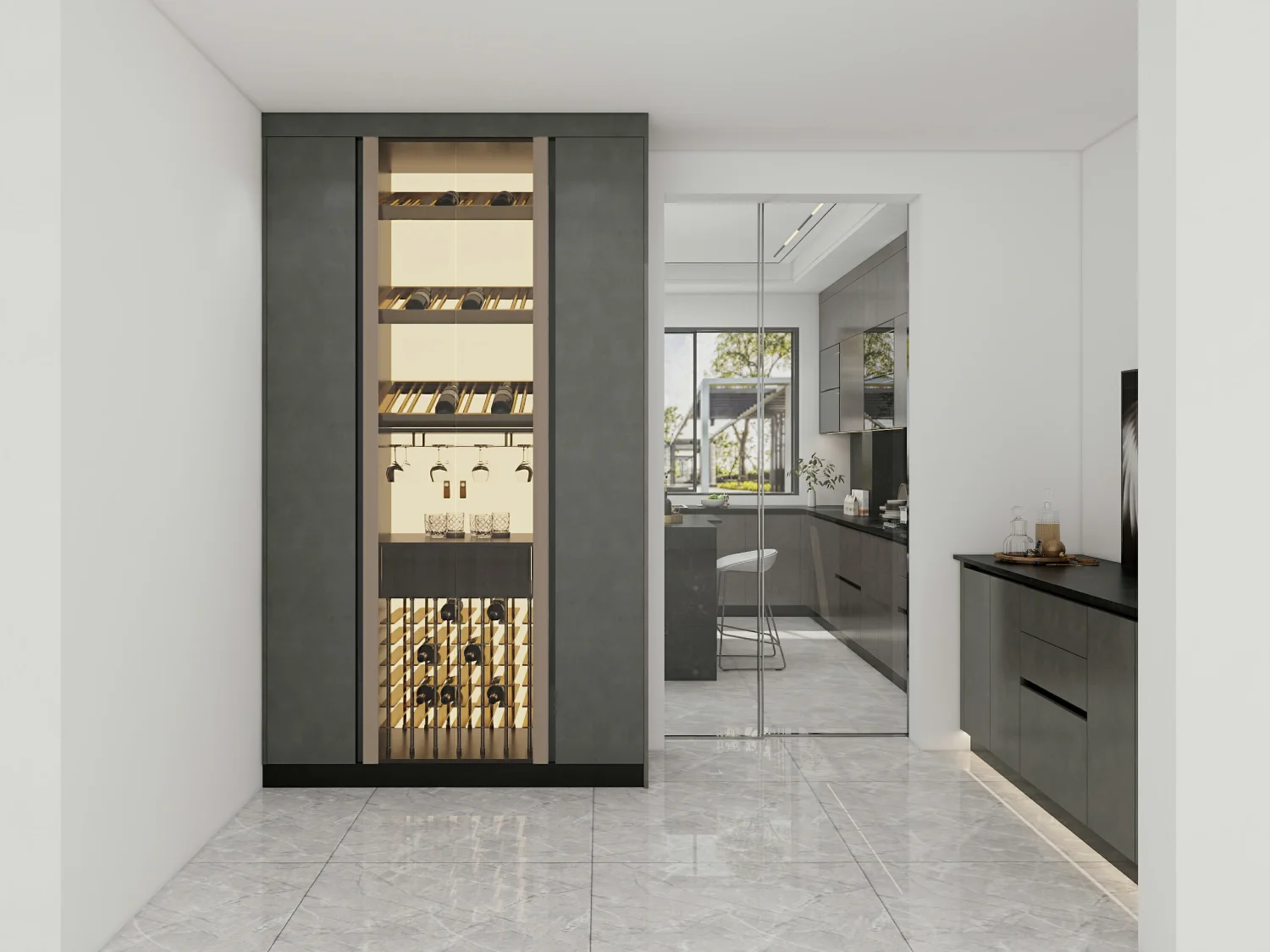
- Freestanding Wine Cabinets: These are more versatile and can be placed anywhere in your home. While they take up more space, they’re easy to install and can be moved as needed. They’re ideal for larger collections that don’t need to fit into a specific space.

Single‑zone vs Dual‑zone Wine Cabinets
- Single-zone Wine Cabinets: These are designed to maintain one consistent temperature throughout the cabinet. This is ideal if you’re storing one type of wine or if you don’t have many bottles.
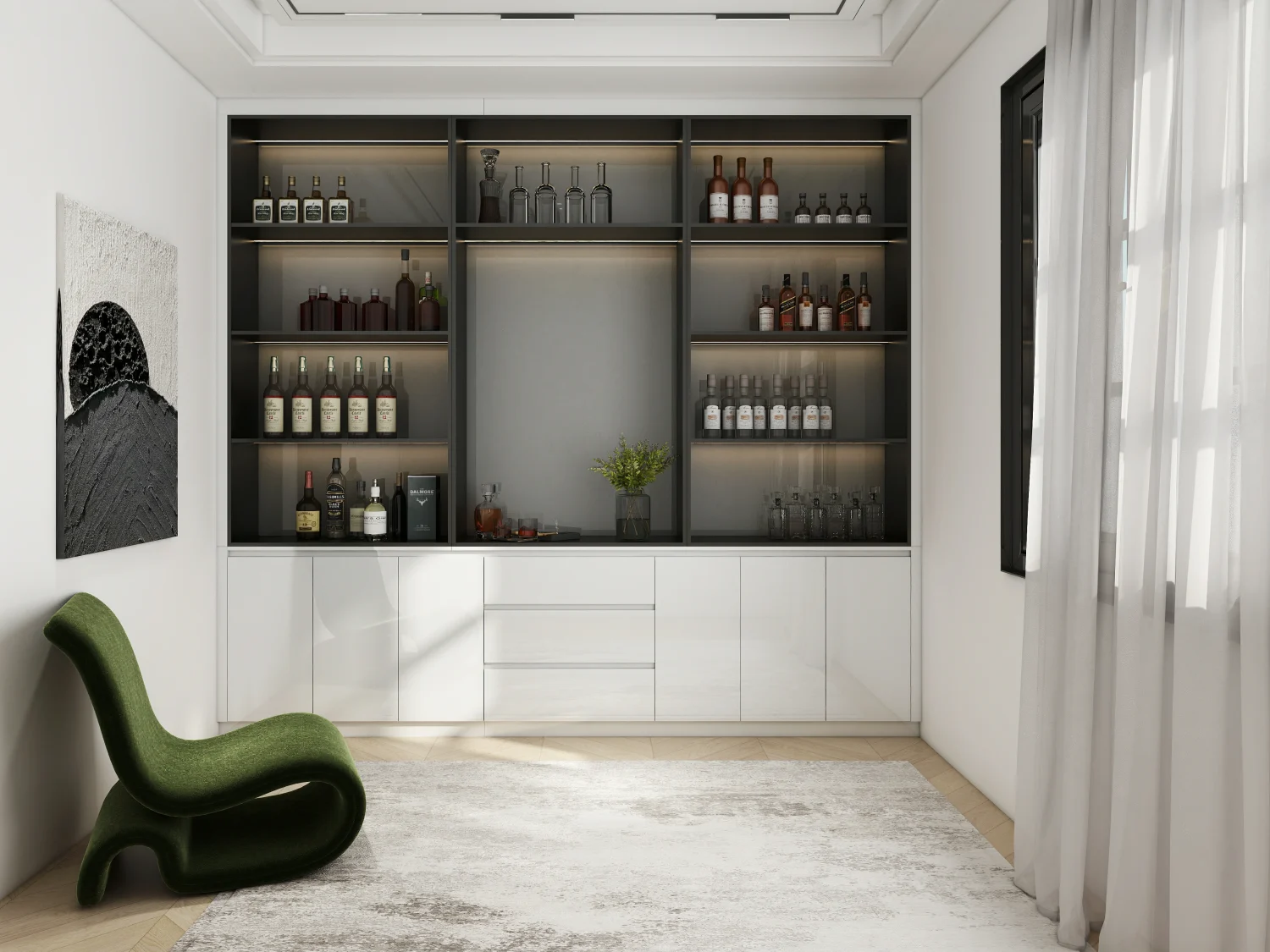
- Dual-zone Wine Cabinets: If you like both red and white wine, a dual-zone cabinet is your best bet. These models allow you to set two different temperatures—one for red wine and one for white or sparkling wines—so each type of wine is stored at its ideal temperature.

Compressor vs Thermoelectric Wine Cabinets
Compressor Wine Cabinets: These work similarly to a refrigerator, using a motor to cool the air. They’re best for larger collections and warmer climates because they maintain a consistent temperature, even in hotter environments.
Thermoelectric Wine Cabinets: These are quieter and more energy-efficient, making them ideal for smaller collections and cooler spaces. They don’t produce vibrations, which is important for long-term wine storage. However, they are less effective in warmer environments, so they’re best used in areas with stable temperatures.
How Much Storage Capacity Do You Really Need for Your Wine Cabinet?
When it comes to wine cabinets, size matters—but so does how much wine you plan to store. You need to ensure your wine cabinet can comfortably accommodate your collection without overcrowding, which could lead to improperly stored bottles. Here’s how to determine the right size for your needs:
Small Collections (Under 50 Bottles)
If you’re just starting out or you only purchase wine occasionally, a small wine cabinet with a capacity of 12 to 50 bottles will suffice. These models are compact and easy to fit in a smaller kitchen, pantry, or even a living room.
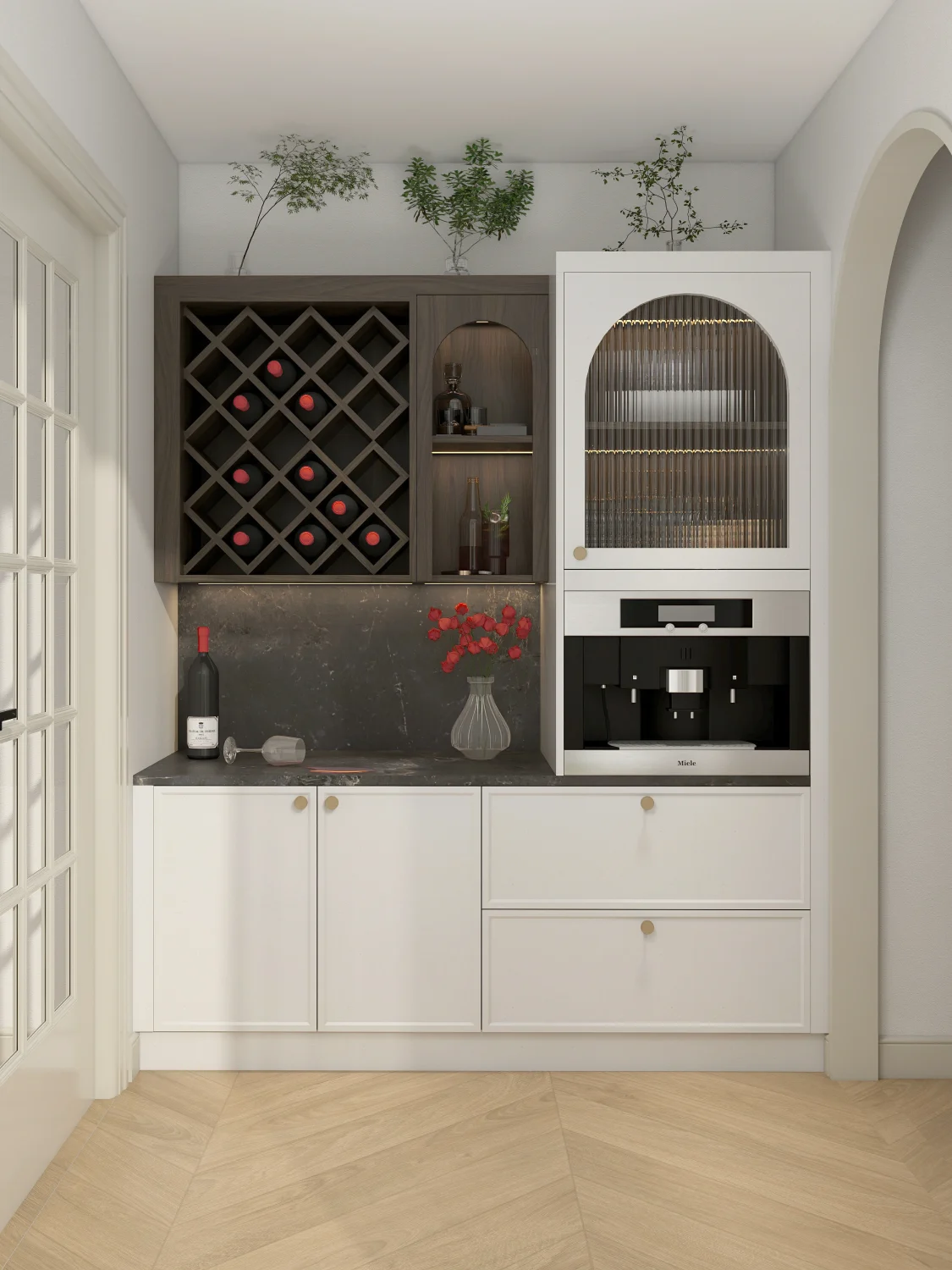
Medium Collections (50-150 Bottles)
For those who are serious about wine and want a diverse collection, a wine cabinet with a capacity between 50 and 150 bottles is a great choice. These cabinets offer more space to grow your collection and can accommodate a range of bottle sizes, from standard Bordeaux bottles to larger Champagne bottles.
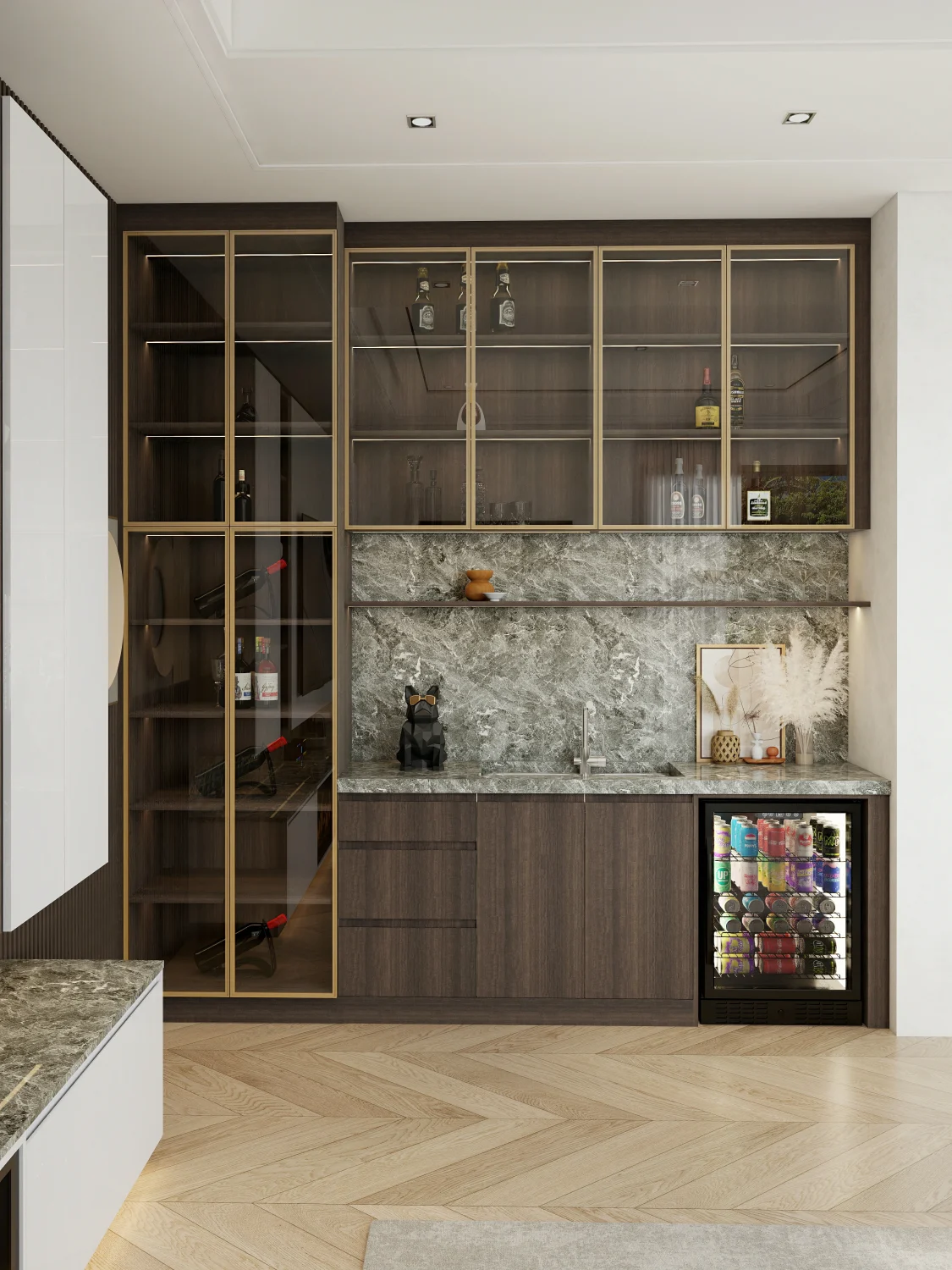
Large Collections (150+ Bottles)
If you’re a wine enthusiast or a collector, you may need a cabinet that holds 150 bottles or more. Larger cabinets are perfect for people who buy wine in bulk, collect rare bottles, or simply want to store a large variety of wines. Keep in mind, large cabinets may require more space in your home, and the installation process can be more involved.

Why Is Temperature Control Essential in Choosing a Wine Cabinet?
Temperature is one of the most important factors in maintaining the quality of your wine. Wine is highly sensitive to temperature changes, which is why temperature control is one of the most sought-after features in a wine cabinet.
Ideal Temperature Ranges
Red Wines: These should be stored at temperatures between 55°F and 65°F. Storing reds at a slightly warmer temperature helps bring out their full flavors.
White Wines: These should be stored a little cooler, between 45°F and 55°F, to preserve their crispness and aroma.
Sparkling Wines: The cooler the better for sparkling wines, so a range of 40°F to 50°F is ideal.
| Wine Type | Ideal Temperature Range |
|---|---|
| Red Wines | 55°F – 65°F |
| White Wines | 45°F – 55°F |
| Sparkling Wines | 40°F – 50°F |
Many wine cabinets come with digital thermostats for easy, precise temperature control. Some models also offer dual-zone capabilities, allowing you to store both reds and whites at the ideal temperatures simultaneously.
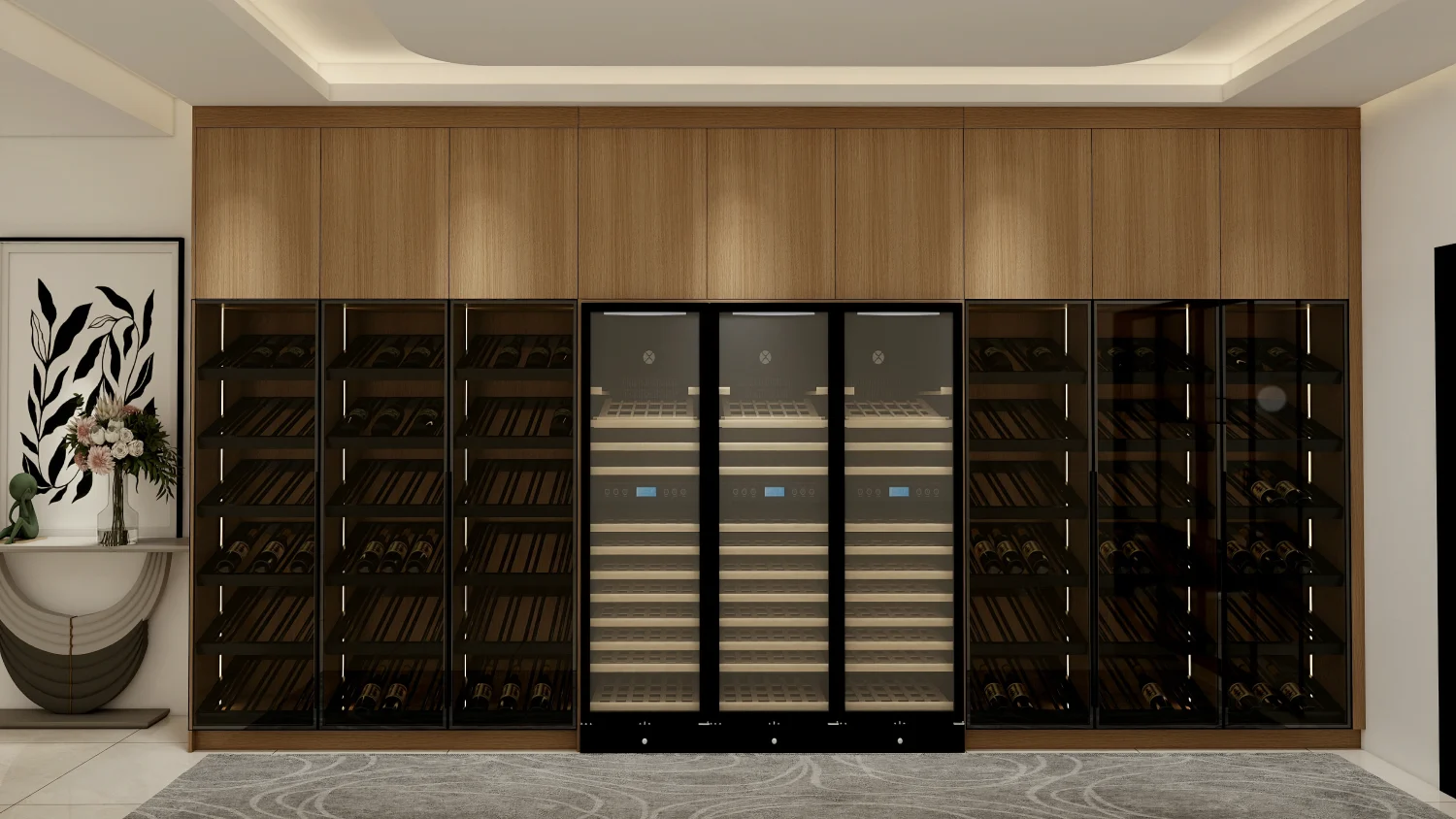
Is Humidity Control in Your Wine Cabinet Worth the Extra Investment?
Humidity is another critical factor in wine storage. The ideal humidity level for wine storage is between 50% and 70%. Too much humidity can cause mold, while too little can cause corks to dry out, letting air into the bottle and spoiling the wine.
Why Humidity Matters
If you live in a dry climate, a wine cabinet with built-in humidity control is essential. Many high-end wine cabinets come with this feature, ensuring that the corks remain moist and the wine stays sealed.
Some cabinets also feature an automatic humidity control system, while others have a built-in humidifier to maintain the perfect environment. If you’re storing wine for long-term aging, this is a feature worth considering.
Maintaining 50–70% relative humidity keeps corks moist and prevents oxidation, which is vital for long-term aging.
Temperature alone is enough—humidity control is optional and unnecessary.
Does Your Wine Cabinet Really Need a UV-Protected Glass Door?
UV rays can accelerate the aging process of wine, causing it to deteriorate faster. For this reason, many wine cabinets come with UV-resistant glass doors to protect your wine from harmful light exposure.
What UV Protection Does
UV protection prevents light from entering the wine cabinet and affecting the wine inside. It also helps keep the wine’s color, aroma, and flavor intact over time. If your wine cabinet doesn’t have UV protection, consider choosing one that does, especially if you’re storing wine in a room with significant light exposure.
UV-resistant glass blocks harmful rays that accelerate wine aging and degrade flavor.
Dark-colored or tinted glass is sufficient—special UV protection isn’t needed.
How Important is Vibration Control in a Quality Wine Cabinet?
Vibration can disturb the sediment in wine bottles, which interferes with the aging process. For this reason, vibration control is an important feature in high-quality wine cabinets.
Why Vibration Matters
Vibration causes wine to move inside the bottle, which may disrupt the aging process and cause sediment to mix with the liquid. Many modern wine cabinets feature vibration-dampening technology, such as wood shelving or specially designed compressors to minimize movement. If you’re storing wine for aging, this feature is crucial.
Anti-vibration features (wooden shelves, low-vibration compressors) prevent sediment disturbance and support proper aging.
Occasional door opening creates negligible vibration and has no impact on wine quality.
Should You Consider Smart Features and Digital Controls in a Wine Cabinet?
As technology continues to evolve, smart wine cabinets are becoming more popular. These high-tech units allow you to monitor and control your wine storage remotely, ensuring your wine is always at the perfect temperature and humidity.
Smart Features to Look For
App Integration: Many smart wine cabinets come with apps that allow you to monitor your wine’s environment from anywhere.
Digital Temperature Control: For precise adjustments, digital controls let you set and maintain the ideal temperature easily.
Remote Monitoring: Some models even send alerts if the temperature or humidity falls outside the optimal range, giving you peace of mind.
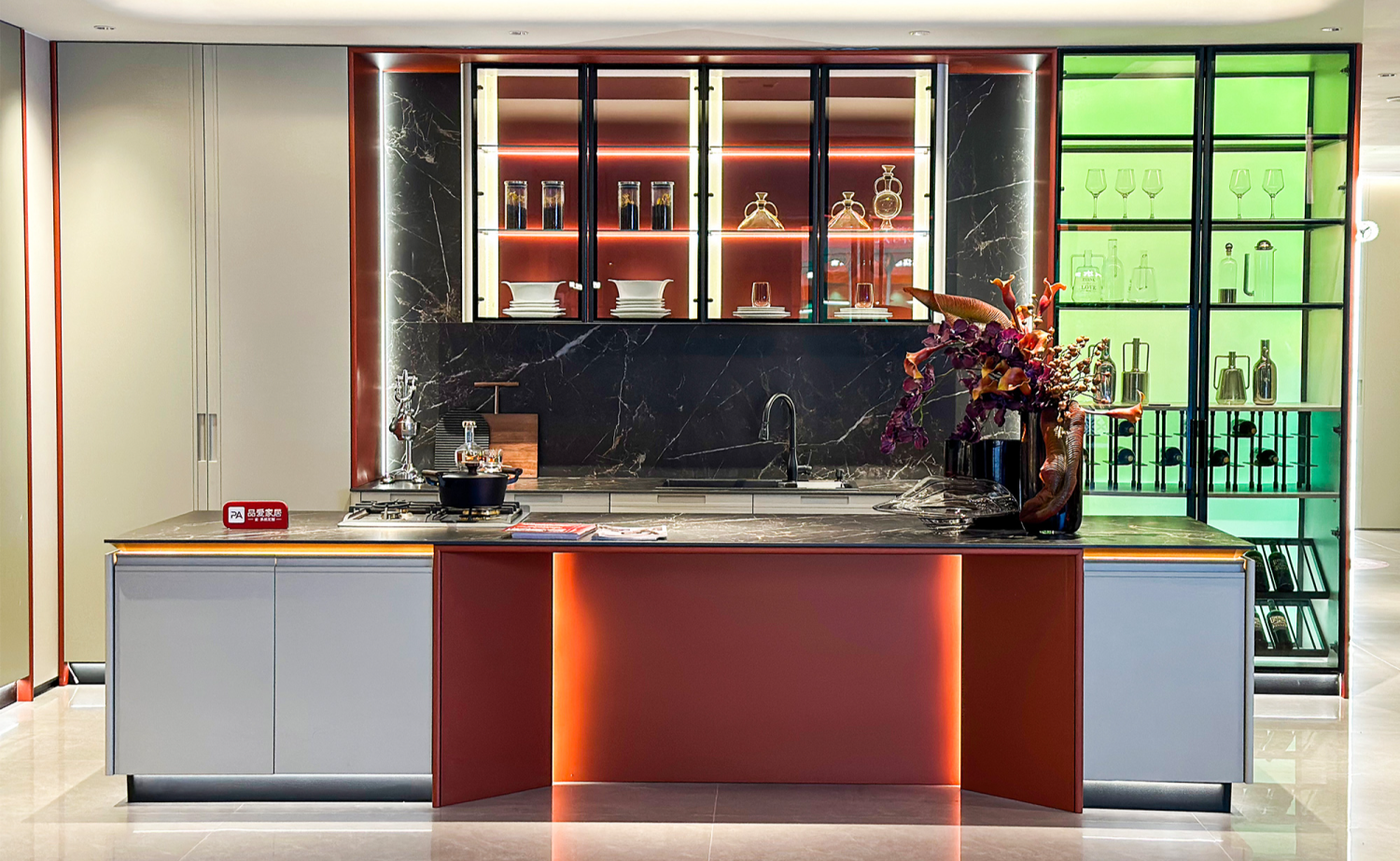
These features are especially useful for those who want to ensure their wine is always stored in the best conditions, no matter where they are.
What Are the Best Brands and Top Wine Cabinet Models Right Now?
There are several reputable brands that dominate the wine storage market, each offering unique features and models. Here are some of the best options currently on the market:
EuroCave: Known for their high-end, reliable wine cabinets with both single and dual temperature zones.
- PA Home: PA Home is also a top contender in the cabinet market, specializing in customized, premium kitchen cabinet and wine cabinets. With over 17 years of experience in the cabinets industry, PA Home offers wine cabinets designed to fit seamlessly into your home, combining functionality with style. Whether you need a compact model for a small collection or a larger unit for serious wine storage, PA Home provides tailored solutions to meet your specific needs.
Vintec: Offers stylish designs and advanced cooling technology for both wine connoisseurs and casual collectors.
Wine Enthusiast: Perfect for those on a budget, with a range of affordable, efficient wine storage solutions.
Haier: A great choice for those seeking energy-efficient, well-designed cabinets at an affordable price.
Where Should You Install Your Wine Cabinet for Maximum Effectiveness?
Proper installation is key to keeping your wine in perfect condition. Here are some tips on where to place your wine cabinet:
Avoid Sunlight: UV rays can damage the wine. Keep the cabinet away from windows and direct light.
Keep Away from Heat Sources: Do not place your wine cabinet near radiators, stoves, or other heat-producing appliances.
Ensure Proper Ventilation: Make sure there is plenty of air circulation around the cabinet to maintain consistent cooling.
How Do You Properly Maintain and Clean Your Wine Cabinet?
Maintaining your wine cabinet is essential for its longevity and effectiveness. Regular cleaning ensures that your wine is stored in the best possible conditions. Here’s how to care for your wine cabinet:
Clean the Shelves: Dust and dirt can affect your wine, so clean the shelves regularly.
Check Seals: Ensure the door seals are intact to avoid temperature fluctuations.
Defrost: If your cabinet collects ice, defrost it regularly to maintain efficient cooling.
Conclusion
Choosing the right wine cabinet is essential for anyone serious about storing wine. By considering factors like storage capacity, temperature control, and smart features, you can ensure your wine is always kept in the ideal environment. Ready to take the next step? Check out our top-rated wine cabinets today and find the perfect one to suit your needs!
FAQs
Most wine cabinets are energy-efficient, consuming as little as 100 to 150 kWh per year, similar to the energy usage of a small refrigerator.
While wine cabinets are designed specifically for wine, many can also store other beverages, such as beer, at appropriate temperatures.
With proper care, a high-quality wine cabinet can last 10 to 15 years or more.


